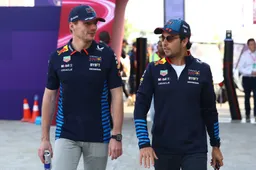Why McLaren's winning formula doesn't rely on a single 'dictator'
10:14, 19 Aug 2025
0 Comments
McLaren team principal Andrea Stella explained in more detail the innovative approach adopted by McLaren of appointing three technical directors who report to chief designer Rob Marshall.
After more than fifteen years without success, McLaren has finally made its mark in Formula 1 starting last year, winning a constructors’ title that had been missing since 2008 with Lewis Hamilton and since 1998 for the constructors.
Certainly thanks to the duo Zak Brown and Andrea Stella, crowning a project that began between the end of 2022 and the start of 2023, and which had already seen a clear improvement on track that year after a difficult start to the season.
Another major milestone was reached with the arrival of Rob Marshall, a historic figure from Red Bull’s dominant years, who joined the British team at the beginning of 2024 initially as technical director, and then as chief designer following a reorganization of the technical staff structure.

Andrea Stella, team principal of McLaren
How McLaren reshuffled its technical staff
In fact, starting in April of last year, McLaren opted for a unique top-level approach, appointing three technical directors, all reporting to Marshall.
Following David Sanchez’s exit in May of last year, who now works as Executive Technical Director for Alpine, McLaren reshuffled its leadership: Neil Houldey took on the role of Technical Director of Engineering, Mark Temple was elevated to oversee performance, and Peter Prodromou assumed responsibility for aerodynamics.
A move that proved successful, judging by the on-track results and the dominance of the MCL-39 project, even though this is the final year of the current regulations cycle.
"I still remember when we announced that we were going from one to three technical directors, there were so many questions about who makes the decisions,'' Stella told in conversation with motorsport.com.
''For me, who makes the decisions has never been a problem, because my normal way of looking at things is so collaborative that who doesn't have those kinds of attributes is just not, simply, at the table in the first place.''
The Italian manager finally explained how the team chose to divide responsibilities across multiple roles rather than relying on a single “dictator.”
"Decisions normally tend to be just a critical mass of information accumulated, rather than having a dictator that at some stage will make a decision,'' he said.
''Zak and I believed that this is possible. And since then we have added Rob Marshall, which is then a fourth TD, and the dynamics have not changed.''
Read also
Read more about:
Popular on GPBlog

1
New F1 car 'comes alive' ahead of the 2026 Formula 1 season
2320 times read

2
Cadillac confirms signing new driver for its debut Formula 1 season
1614 times read

3
Mercedes-AMG F1 reveals first look at W17 as 2026 era begins
1065 times read

4
'Being Verstappen's teammate is the hardest job in Formula 1 by far'
993 times read
Loading















